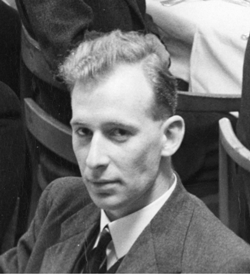 Survey geologist of the West Midlands, remembered in the Church Stretton sheet and memoir
Survey geologist of the West Midlands, remembered in the Church Stretton sheet and memoir
Bob Hoare, who has died aged 85, was one of the post-war generation of Geological Survey field geologists who tackled the complexities of the West Midlands, remembered mainly in the classic Church Stretton map sheet and memoir. Subsequently he was an influential figure in rationalising and modernising the application of geology to the era of highly mechanised underground coal mining.
SUPERPIT
Bob was born in Hong Kong. Lonely wartime years at boarding school – his parents were interned – were followed by a first class degree in geology and a research MSc in coal petrography at University College Cardiff. With this background it was natural that he should gravitate towards the Coal Measures when, in 1949, he joined the Geological Survey as a field geologist. Mentored by George Mitchell, Bob worked on the flood of borehole data generated by the newly nationalised coal industry, most notably laying the geological foundations for the establishment of the UK’s first brand new superpit at Lea Hall.
In 1958 he moved to the newly established position of Divisional Geologist for the West Midlands Region of the National Coal Board. Here he built a state-of-the-art exploration team that was also effective in day-to-day mining matters. Keys to success were the introduction of improved drilling methods from the oil industry and the adaption of downhole, surface and underground geophysical techniques to the requirements of mining. He also championed multidisciplinary studies: application of hydrogeology and rock mechanics to issues of water influx and surface fissuring, and of seismic monitoring to the understanding of mining-induced earth tremors.
COALBED METHANE
By the time he retired in 1985 many of the techniques he had pioneered and supported had become standard practice throughout the coal industry: Western Area Geology Department was widely recognised as being at the forefront in coal mining geology, and large areas of coal reserves had been proved in Staffordshire, Cheshire and Lancashire, laying the foundations for today’s coal-bed methane development initiatives.
Bob was a cultured man with many interests outside geology including sport, music, theatre, travel and fine French wine. While he did not fit naturally into the politics and robust world of coal mining he was greatly respected by the mining engineers he worked with for his honest and transparent application of science to understanding and solving complex problems. His management style was collegial and friendly, often enjoying a Friday lunchtime pint with his staff. He was particularly concerned to ensure that everyone had the opportunity to attend training courses, both technical and managerial, and had real delegated responsibility.
Bob was married twice, but had no children. Perhaps because of this he took great interest and pride in the progress of his young colleagues and protégés. After retiring he severed his links with both the industry and the Midlands, settling in Somerset where he pursued his pastimes of dry-stone walling and silversmithing. Geology provided the inspiration for the latter – many of his designs being based on SEM images of coccoliths.
By Bernard Besly, with help from May Hoare